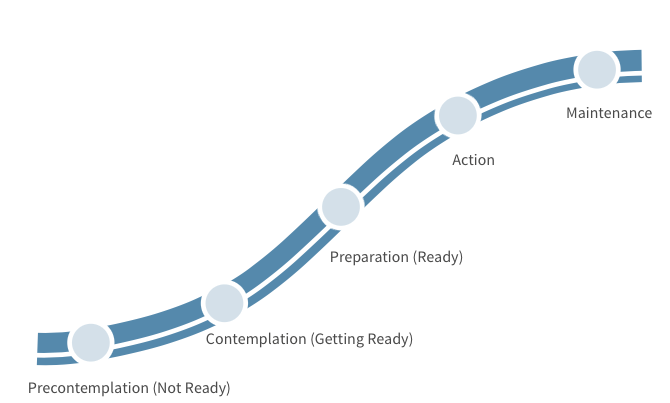

A World Health Organization's report, “Why health communication is important in public health,” highlights that many of the risks to global public health are rooted in human behavior.
Behavior change communication (BCC) programs are interventions relying on the strategic use of the most elementary human interaction – communication - to promote and influence behaviors that will improve health outcomes.
Positive behavior change can be critical to improve health status and related outcomes
Over the years, health communication campaigns with behavioral and social objectives have played a central role in the advancement of public health globally. They are often critical for large-scale interventions, such as cancer screening and prevention, tobacco control, heart disease, and AIDS prevention.
Here is an example of a successful campaign encouraging youths to get tested for HIV.
Albeit promising, the ability of health communication campaigns to change behavior and yield positive returns is complex.
These campaigns are often competing with a number of barriers to change, such as psychological influences, powerful social norms, and existing perceptions.
‘Wash your hands, wear a mask, use hand sanitizer, keep the distance!’ Public messages like these have been prevalent recently. Such precautionary behaviors to control the spread of COVID-19 is widely familiar to the public.
The pandemic brought together health experts, political leaders, and governments from all over the world to develop health-related communication strategies that impacted millions of people, affecting various aspects of their everyday life with new behavioral routines.
 |
 |
Health communicators have a chance to improve people’s lives, and, in times of a pandemic, effective behavior change communications can make the difference between life and death.

Steps of change - The transtheoretical model of behavior change.
Changing human behavior, however, is a complex matter. Behavior is the product of multiple factors, including individual determinants such as education, knowledge, desires, and needs, but also the situational environment, social norms, and the relationship with communities. Behavioral scientists’ recognition of this complexity poses challenges in designing and testing multilevel interventions.
Often, the way from knowing to doing is not smooth.
Healthcare messages may be straightforward for some, but not necessarily easy to realize for all. Even supposing everyone had received the same true and factual information, behavior change is not uniform.
Moving the target audience from ‘knowledge’ about the importance of the health change to actually ‘changing behavior’ requires a systemic, multidisciplinary, theory-based, and audience-centered approach: the specificity of the target audience needs to be addressed to effectively promote change.
Personalized messages and creativity play a significant role in shaping the most suitable and culturally friendly communications to involve intended groups in the process of behavior change.
The Real Cost Campaign (above) is an example of a healthcare communication campaign that has been effective at driving change. Real Cost was launched by the United States Food and Drug Administration (FDA) in 2014 and has a proven record of tobacco use reduction. A well-funded, evidence-based media strategy and the dissemination of powerful audience-centered messages contributed to the campaign's success.
Australia's Sun Smart Campaign is another example of a successful and world-leading campaign. It was launched in 1988 to increase preventative measures against skin cancer. Through multiple-targeted mass media campaigns, Sun Smart has been able to trigger important changes in sun protection behavior, resulting in the reduction of skin cancer rates.
Over the years, a wide variety of channels have been deployed to raise awareness of multiple health-related issues.
Conversely, health authorities and stakeholders globally have been confronted with a massive flow of fake news and misinformation. For example, face masks and 5G have been falsely identified as coronavirus activators. Others have suggested, wrongly, that hydroxychloroquine is an efficient remedy against COVID-19. Such beliefs despite lack of evidence have triggered reflections on the uncertain potential of media as it relates to health promotion.
Despite these challenges, new technologies offer an opportunity to increase health public awareness. Furthermore, healthcare communication campaigns have already made important contributions to global public health.
In this context, healthcare communicators have a critical role to play in ensuring the provision of relevant and accurate information.
Further research to document and understand the effectiveness of healthcare communication campaigns and behavior change represents a crucial step to both promoting healthier behaviors and overcoming what the WHO Director-General has called the ‘infodemic’.
Further reading:
Healthcare Communications: A Matter of Creativity & Responsibility by
Image:
WHO infographics on COVID-19 transmission and protective measures.
Steps of change - The transtheoretical model of behavior change.
Sources:
Samuel Ngigi, Doreen Nekesa Busolo (2018). Behaviour Change Communication in Health Promotion: Appropriate Practices and Promising Approaches.
Rimal, R. N., & Lapinski, M. K. (2009). Why health communication is important in public health. Bulletin of the World Health Organization, 87(4), 247–247a. https://doi.org/10.2471/blt.08.056713
Health communication campaigns: A brief introduction and call for dialogue, International Journal of Nursing Sciences, Volume 7, Supplement 1, 2020, Pages S11-S15, ISSN 2352-0132,
Mheidly, N., Fares, J. Leveraging media and health communication strategies to overcome the COVID-19 infodemic. J Public Health Pol 41, 410–420 (2020).
Wakefield, M. A., Loken, B., & Hornik, R. C. (2010). Use of mass media campaigns to change health behaviour. Lancet (London, England), 376(9748), 1261–1271.
COVID-19 Communication & Behavior Change: Report and Webinar (2021). Openideo. https://www.openideo.com/content/covid-communication-report-webinar
Schiavo, R. (2014). Jossey-Bass public health.Health communication: From theory to practice (2nd ed.). Jossey-Bass.
“The Real Cost”: A Cost-Effective Approach (2019). FDA
Joint statement by WHO, UN, UNICEF, UNDP, UNESCO, UNAIDS, ITU, UN Global Pulse, and IFRC (2020). Managing the COVID-19 infodemic: Promoting healthy behaviours and mitigating the harm from misinformation and disinformation.
Van der Linden Sander, Roozenbeek Jon, Compton Josh; Inoculating Against Fake News About COVID-19; Frontiers in Psychology; 2020;